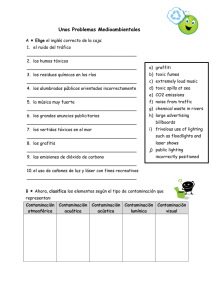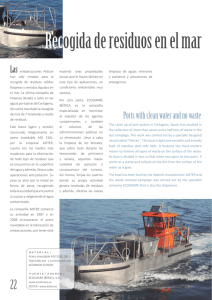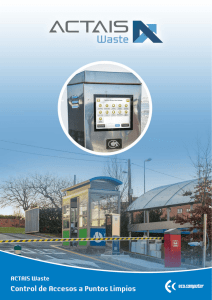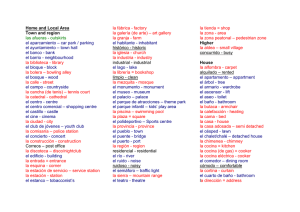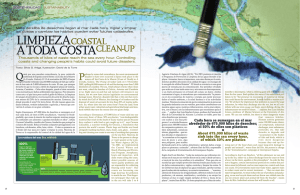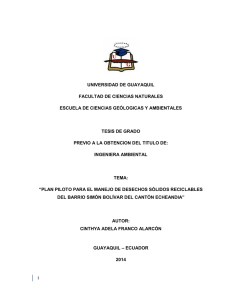Descargar documento
Anuncio
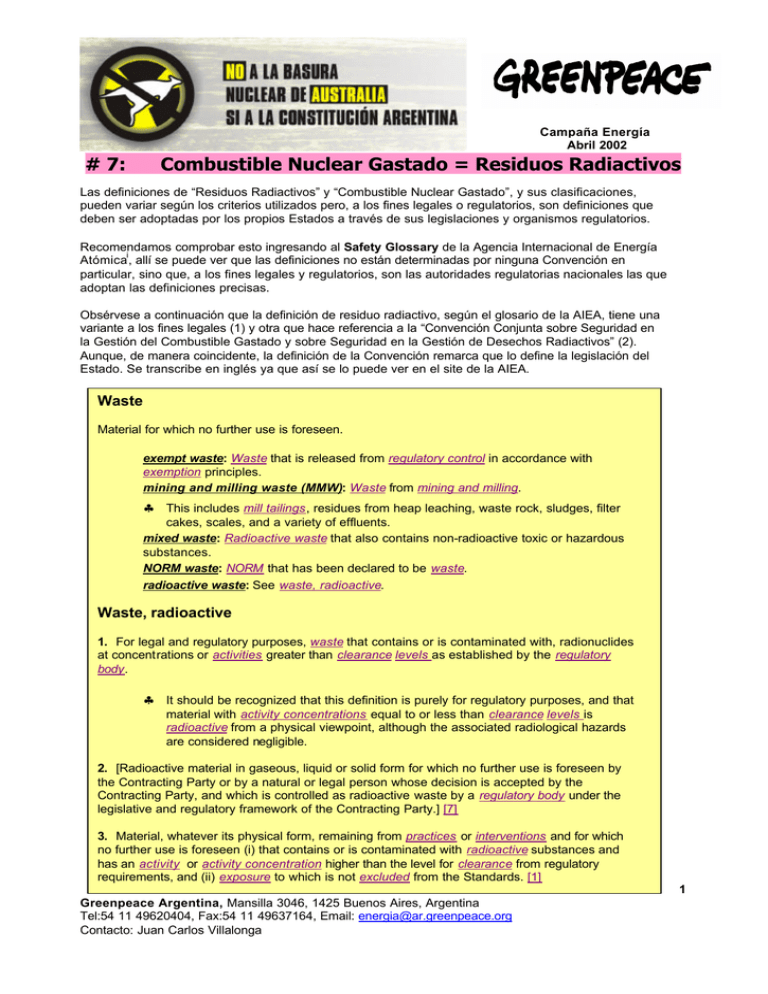
Campaña Energía Abril 2002 # 7: Combustible Nuclear Gastado = Residuos Radiactivos Las definiciones de “Residuos Radiactivos” y “Combustible Nuclear Gastado”, y sus clasificaciones, pueden variar según los criterios utilizados pero, a los fines legales o regulatorios, son definiciones que deben ser adoptadas por los propios Estados a través de sus legislaciones y organismos regulatorios. Recomendamos comprobar esto ingresando al Safety Glossary de la Agencia Internacional de Energía i Atómica , allí se puede ver que las definiciones no están determinadas por ninguna Convención en particular, sino que, a los fines legales y regulatorios, son las autoridades regulatorias nacionales las que adoptan las definiciones precisas. Obsérvese a continuación que la definición de residuo radiactivo, según el glosario de la AIEA, tiene una variante a los fines legales (1) y otra que hace referencia a la “Convención Conjunta sobre Seguridad en la Gestión del Combustible Gastado y sobre Seguridad en la Gestión de Desechos Radiactivos” (2). Aunque, de manera coincidente, la definición de la Convención remarca que lo define la legislación del Estado. Se transcribe en inglés ya que así se lo puede ver en el site de la AIEA. Waste Material for which no further use is foreseen. exempt waste: Waste that is released from regulatory control in accordance with exemption principles. mining and milling waste (MMW): Waste from mining and milling. ♣ This includes mill tailings, residues from heap leaching, waste rock, sludges, filter cakes, scales, and a variety of effluents. mixed waste: Radioactive waste that also contains non-radioactive toxic or hazardous substances. NORM waste: NORM that has been declared to be waste. radioactive waste: See waste, radioactive. Waste, radioactive 1. For legal and regulatory purposes, waste that contains or is contaminated with, radionuclides at concentrations or activities greater than clearance levels as established by the regulatory body. ♣ It should be recognized that this definition is purely for regulatory purposes, and that material with activity concentrations equal to or less than clearance levels is radioactive from a physical viewpoint, although the associated radiological hazards are considered negligible. 2. [Radioactive material in gaseous, liquid or solid form for which no further use is foreseen by the Contracting Party or by a natural or legal person whose decision is accepted by the Contracting Party, and which is controlled as radioactive waste by a regulatory body under the legislative and regulatory framework of the Contracting Party.] [7] 3. Material, whatever its physical form, remaining from practices or interventions and for which no further use is foreseen (i) that contains or is contaminated with radioactive substances and has an activity or activity concentration higher than the level for clearance from regulatory requirements, and (ii) exposure to which is not excluded from the Standards. [1] 1 Greenpeace Argentina, Mansilla 3046, 1425 Buenos Aires, Argentina Tel:54 11 49620404, Fax:54 11 49637164, Email: [email protected] Contacto: Juan Carlos Villalonga En cuanto a la clasificación de los residuos, el Safety Glossary señala que el Combustible Gastado es un residuo de alta actividad si el mismo es declarado de ese modo (ver la definición de residuos altamente radiactivos – High Level Waste). Esto es lo que ocurre con la legislación Argentina. waste classes ♣ Classes not in square brackets are those recommended in Safety Series 111-G-1.1 [34]. This classification system is organized to take into account matters considered of prime importance for disposal safety. A number of issues related to waste classification are currently under review. ♣ The other classes listed below (in square brackets) are sometimes used, e.g. in national classification systems, and are mentioned here to indicate how they typically relate to the classes from Ref. [34]. ♣ Other systems classify waste on other bases, such as according to its origin (e.g. reactor operations waste, reprocessing waste, decommissioning waste, defence waste, etc.). [heat generating waste (HGW)]: Radioactive waste which is sufficiently radioactive that the decay heat significantly increases its temperature and the temperature of its surroundings. ♣ In practice, HGW is normally high level waste, although some types of intermediate level waste may qualify as HGW. high level waste (HLW): The radioactive liquid containing most of the fission products and actinides present in spent fuel — which forms the residue from the first solvent extraction cycle in reprocessing — and some of the associated waste streams; this material following solidification; spent fuel (if it is declared a waste); or any other waste with similar radiological characteristics. ♣ 3 Typical characteristics of high level waste are thermal power above about 2 kW/m and long lived radionuclide concentrations exceeding limitations for short lived waste. [34] Como se puede apreciar, las definiciones del glosario de la Agencia Internacional de Energía Atómica reconoce que son los estados los que definen, a los fines regulatorios, cuando el combustible gastado es considerado un residuo radiactivo de alto nivel (“high level waste”). Así son definidos en la Ley 25.018 en Argentina. i “Safety Glossary”, Agencia Internacional de Energía Atómica, http://www.iaea.org/ns/CoordiNet/safetypubs/iaeaglossary/glossaryhomepage.htm 2 Greenpeace Argentina, Mansilla 3046, 1425 Buenos Aires, Argentina Tel:54 11 49620404, Fax:54 11 49637164, Email: [email protected] Contacto: Juan Carlos Villalonga
